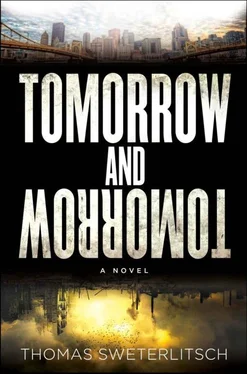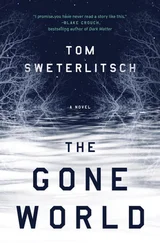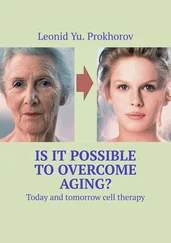He folds open several sheets of sketch pad paper—of course I remember these drawings, but haven’t thought of them in years. Drawings I’d made during our first sessions together, when I was defensive, cautious to talk with Simka about anything personal. I’d been sent to mandatory counseling by the Employee Assistance Program when the depression and drugs began to affect my work—my case was slotted to Simka. At first, our sessions were largely silent on my part, businesslike—Simka asking questions about the nature of my work, my work environment, wondering if I got along with my coworkers, with my boss, fishing for reasons why I might be having so much trouble. I rarely answered, or was vague. One afternoon several sets of crayons and a few pads of newsprint were spread out on an activity table in his office.
“I didn’t bring these for you,” I remember him telling me when I noticed the art supplies. “I run an art therapy group for teenagers. After-school stuff—”
I remember I told him that my wife used to do some art therapy as a volunteer at a place called the Manchester Craftsmen’s Guild. It was the first time I’d mentioned Theresa to him.
“We’ve been making memory maps,” Simka explained. “You draw the house you grew up in and write in everything you can remember about it, every detail. You’d be surprised how much you remember when you’re filling in a memory map, the specificity of the details. The kids never have enough room to write everything they want, so we journal, too—”
“What’s the point of all this?” I think I asked him.
“It helps you remember,” said Simka. “It helps you to understand yourself. The memory maps help people understand what is important to them, what they’re passionate about—it helps them remember significant signposts that they may have ignored, it helps them recover. Then you start drawing in the neighborhood you grew up in, sometimes on a separate sheet of paper. Everything you remember—”
I don’t remember how, exactly, he coaxed me into picking up a crayon to draw—I may have even suggested it, or maybe I just started drawing—but that’s how we spent our sessions for quite some time. Here’s the house in Bloomfield where I grew up, a brick three-bedroom row house, the building almost a hundred fifty years old when I’d lived there, my handwriting on the map impossible to read now, but I remember describing the crab apple tree in the back lot; the plank of wood my father had nailed between the branches to serve as a little bench up there; the shells of locusts left on the bark of the cherry tree; my dog, Bozworth—a German shepherd. Here’s my drawing of Bozworth—noodles of black and brown crayon, hardly recognizable as a dog if I hadn’t labeled him in pencil. I used to walk him down by the tracks and we’d stand aside on the gravel slopes to watch trains trundle by. Fourteen years old when we put him down. Simka hadn’t even known I was from Pittsburgh until I drew the rivers.
“I do remember these,” I tell him. Here’s one of Phipps Conservatory, where Theresa worked in the education department—I tried to draw in the walkways through the gardens, the vanilla bean trees, the butterfly forest and the café where we used to meet. Another map, labeled The Georgian—Room 208 . Our shelves filled with vinyl records and books, our cupboards filled with exotic ingredients for Theresa’s cooking. Boxes of poetry manuscripts people had sent for my fledgling poetry line, Confluence Press, all unread when they burned. A few programming books, when I was studying coding to make Confluence Press viable as an e-book enterprise. Here’s the second bedroom, converted into Theresa’s office. I opened up to Simka through these drawings, and eventually I could talk freely without them. Simka had helped me immensely those early years—I used to collect things, back then. Hoard things. I used to buy crates full of old newspapers—anything printed from before the bomb. Simka helped me realize I couldn’t hold on to the past in that way, that I indulged in unhealthy obsessions that were bankrupting me and contributing to the squalor I lived in. “Let go,” he’d told me. He stabilized me.
“You can keep these drawings,” he says. “Otherwise, I’ll keep them tucked away in your file—”
“You should keep them,” I tell him.
Simka smiles. He carefully folds up the drawings and returns them to the file folder.
“And how are you handling your dreams?” he asks. “The last time we spoke, you were having some difficulty sleeping. You were thinking deeply about the young woman—Hannah, I believe her name was. Do you still think about Hannah?”
Horrified by the notion that I may have abandoned her, but for some reason I don’t want to tell Simka the truth—that I think about Hannah whenever I try to sleep, that I see her body and sometimes imagine her voice, so I say, “I stay busier now than I used to. Kucenic has her case now, he’ll take care of her. I don’t have much time to think about the past—”
“Well, then. Here’s your paperwork,” he says. “Good luck. I’m very proud of how far you’ve come. I know that it’s been hard for you recently. I should have realized that you might have needed some extra attention right now, and I’m sorry I failed you in that regard. The ten-year anniversary. I should have anticipated how hard this would be for you—”
“I’m healthy,” I tell him. “All’s well that ends well—”
“That’s fine, very fine,” says Simka, but tells me recovery rarely happens in one gulp, and that it’s a fine idea to still journal—that I’m still suffering from depression and anxiety, even if I’m feeling better and have been distracted by some exciting new changes.
“I’m still writing,” I tell him, and show him this notebook. He flips through, his Adware overlaying my poor handwriting with Verdana typeface. He reads a page. “Good,” he says, “good detail. Consider using some of the Progoff prompts…” I remember an early session when I showed him my poetry, the poetry I used to write. He’d read them attentively, twice over, three times over, and had said, “These are beautiful.”
“So, now we’re talking purely as friends,” he says. “Addiction and recovery from depression are difficult. There isn’t a quick fix—even complete dialysis and Adware reconditioning don’t treat the underlying causes of your addiction. You’ll have to work at this, Dominic. As they say, ‘You’re gonna carry that weight—’”
“Timothy told me a very similar thing but said you’d disagree. At any rate, I feel like maybe I can become happy again—”
“Hm,” he says. “Just so you know—indulge me, here, Dominic: you are still eligible for further substance abuse treatment through the District system. Dr. Reynolds pursued your case file once the Correctional Health Board determined you’d have to switch out of my care. I’m not sure why he pursued you, Dominic—but it makes me wonder if he has a predetermined treatment schedule in mind. If you find that your current therapy isn’t helping you meet your goals, and if you decide to sign up for further substance abuse treatment, Dr. Reynolds wouldn’t even have to know. There are confidentiality requirements if you apply directly to the Correctional Health Board. Keep that in mind, anyway. Once the novelty of switching treatment methods fades, you may search out substances again to bring clarity. Old habits die hard—”
“You know, Dr. Simka, bringing up substance abuse clinics with me is counterproductive. I’m beyond that. I’m with Timothy now—”
“I can’t argue with success,” he says.
We’re interrupted—his secretary doesn’t buzz but knocks discreetly, poking her colorful head into the office to announce his next appointment’s ready in the reception room. Simka shakes my hand and asks me to dinner, to talk further when we have more time, in a different setting, over cognac, but I’m noncommittal.
Читать дальше



![Том Светерлич - Завтра вновь и вновь [litres]](/books/401288/tom-sveterlich-zavtra-vnov-i-vnov-litres-thumb.webp)
![Том Светерлич - Исчезнувший мир [litres]](/books/420722/tom-sveterlich-ischeznuvshij-mir-litres-thumb.webp)







